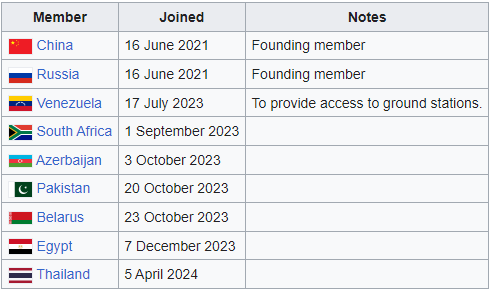According to Russian state-owned media, the Russian government has received an application from the Turkish government to join the Russian-Chinese led International Lunar Research Station program. The announcement from the director of the Space Research Institute (IKI) of the Russian Academy of Sciences Anatoly Petrukovich. reads below:
“Within the framework of the international lunar station, other countries are also planning to participate, this is not only a Russian-Chinese or Chinese-Russian station. There are applications for participation in the station from Turkey, for example, from other countries.”
History of the ILRS
The International Lunar Research Station (ILRS) is a planned lunar base currently being led by Roscosmos and the China National Space Administration (CNSA). On March 9th, 2021 the Russian Federation and the People’s Republic of China signed a Memorandum of Understanding (MoU) regarding the construction of either a lunar surface research station or a lunar orbit research station. While no European nations or the United States were invited or have applied to join the program, Roscosmos and the CNSA did have closed-door consultations with the UN Office for Outer Space Affairs, Germany, France, Italy, and the Netherlands.
As of this publication, despite protest from the U.S. government, several other U.S.-based and European based organizations have cooperated with CNSA on this program. This includes Hawaii-based, non-profit International Lunar Observatory Association (ILOA Hawai’i), Swiss company Nano-SPACE for Cooperation, and France’s Thales Group.
By June 2023, the first follow-on nations began to apply for the program. the UAE and Pakistan as well as the Asia-Pacific Space Cooperation Organization (APSCO) were the first to join. In July 2023, Venezuela joined the program. The total list of participants reads below:

Planned Launches and Timeline
The ILRS is planned to be completed by 2035 with total utilization planned for 2036. As of this publication there have been two lunar launches from the program, the first was conducted by CNSA on December 7th, 2018 which landed on the far side of the moon and a Roscosmos launch on August 10th, 2023, which failed and crashed on the surface of the Moon. The next planned launch of this staging phase is in May 2024 by CNSA on the Cahng’e 6. There will be at least three more launches for this phase which is focused on reconnaissance of the Moon and placing materials in orbit through 2025. The construction phase from 2026 to 2035 is when all of the logistic shuttles will deliver the facility modules into orbit or to the surface.

